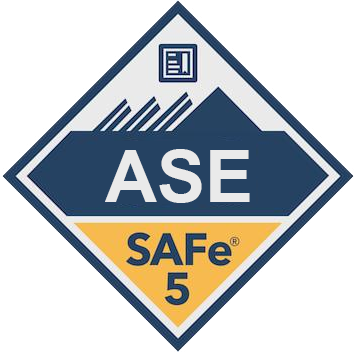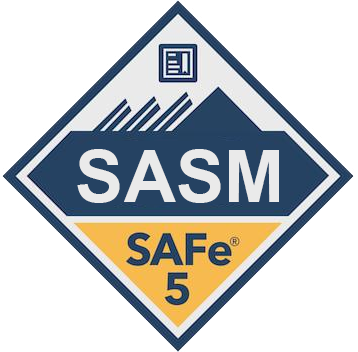Introduction
In software development, the pursuit of methodologies capable of adeptly accommodating evolving requirements and customer needs has persisted. Traditional waterfall approaches, marked by their sequential and linear project management style, often struggled to keep up with the swift pace of technological advancements and market changes. In response, Agile methodologies emerged as a revolutionary paradigm, prioritizing iterative development, customer involvement, and flexibility.
Throughout the years, Agile has undergone notable transformations, leading to the emergence of frameworks such as Scrum and SAFe, each presenting its distinctive approach to Agile development. This article delves into the progression of Agile methodologies transitioning, tracing their inception to their present-day state, and explores the significance of frameworks like Scrum and SAFe in fostering organizational adaptability and ingenuity.
The Rise of Agile Methodologies transitioning from Scrum to SAFe and Beyond:
The origins of Agile methodologies can be traced back to the frustrations and inefficiencies experienced by software development teams in the 1990s. Traditional waterfall methodologies, known for their rigid and sequential nature, often resulted in prolonged development cycles, delayed feedback, and missed deadlines. As the pace of technological innovation accelerated and customer expectations soared, it became increasingly clear that a more flexible and collaborative approach was necessary.
In 2001, a collective of software developers convened to address these challenges and crafted the Agile Manifesto. This influential document outlined the fundamental principles of Agile development, emphasizing the importance of individuals and interactions, working software, customer collaboration, and adaptability over rigid planning. By advocating for flexibility, responsiveness, and customer-centricity, the Agile Manifesto ushered in a new era of software development methodologies.
The Emergence of Scrum:
Among the array of Agile frameworks that emerged following the Agile Manifesto, Scrum swiftly gained prominence as one of the most popular and widely embraced methodologies. Devised by Jeff Sutherland and Ken Schwaber in the early 1990s, Scrum introduced a lightweight and iterative approach to project management.
At its essence, Scrum centers on the notion of short, time-boxed iterations termed sprints, typically lasting two to four weeks. Within each sprint, cross-functional teams collaborate to produce a potentially shippable product increment. Daily stand-up meetings, sprint planning sessions, and retrospective meetings offer avenues for communication, transparency, and ongoing enhancement.
Scrum’s focus on empirical process control, self-organization, and adaptability struck a chord with software development teams in pursuit of a more agile and responsive methodology. By empowering teams to swiftly adapt to evolving requirements and deliver value incrementally, Scrum became synonymous with Agile development and laid the groundwork for subsequent Agile frameworks.
Expanding Agile through SAFe:
While Scrum demonstrated effectiveness for small to medium-sized teams, adapting Agile practices for large enterprises presented distinct challenges. As organizations aimed to extend Agile principles beyond individual teams and projects, the necessity for a structured framework to scale Agile became increasingly evident.
In 2011, Dean Leffingwell introduced the Scaled Agile Framework (SAFe) as a comprehensive approach to scaling Agile practices across entire organizations. SAFe expands Agile principles beyond individual teams to encompass entire value streams, portfolios, and enterprises, offering a structured framework for achieving agility at scale.
At the core of SAFe lies the concept of Agile Release Trains (ARTs), which are self-organizing, cross-functional teams aligned around a common mission or value stream. ARTs operate on a cadence, delivering value in fixed time increments known as Program Increments (PIs). By organizing multiple teams into ARTs and synchronizing their activities through PI planning, SAFe enables large organizations to achieve alignment, collaboration, and expedited value delivery.
Expanding Beyond Scrum and SAFe:
While Scrum and SAFe have solidified their positions as pillars of Agile development, the evolution of Agile methodologies persists without pause. Organizations are increasingly embracing hybrid approaches that blend components of various Agile frameworks to address their distinct contexts and hurdles.
For instance, certain teams amalgamate Scrum methodologies with Kanban’s visual management principles to augment workflow transparency and adaptability. Others incorporate Lean Startup methodologies to cultivate innovation and swift experimentation, empowering teams to swiftly validate concepts and adjust based on market input.
Furthermore, Agile principles are extending beyond conventional software development realms, finding relevance in diverse sectors such as marketing, HR, and finance. By extending Agile methodologies beyond IT, organizations can unlock fresh prospects for cooperation, ingenuity, and value generation across their entire enterprise.
The progression of Agile methodologies and their importance within the IT sector:
Agile Methodologies’ Rise:
Agile methodologies emerged as a solution to the shortcomings of traditional waterfall methodologies, which frequently resulted in inefficiencies, delays, and discontent among stakeholders.
The formulation of the Agile Manifesto in 2001 represented a notable departure in software development philosophy, placing emphasis on flexibility, collaboration, and customer satisfaction over rigid procedures and extensive documentation.
Agile methodologies highlight iterative development, dividing projects into small increments to facilitate regular feedback and adaptation.
The Significance of Agile Methodologies:
Agile methodologies play a vital role in the IT industry by empowering organizations to promptly adapt to evolving market dynamics and customer demands.
Through the adoption of Agile principles, teams can progressively deliver value, shortening time to market and enhancing customer contentment.
Agile methodologies cultivate an environment of collaboration and openness, dismantling barriers and encouraging interdisciplinary collaboration.
The iterative approach of Agile development enables ongoing enhancements, fueling innovation and productivity across organizations.
Transitioning from Scrum to SAFe and Beyond:
Scrum, renowned for its emphasis on brief, time-bound iterations and autonomous teams, emerged as one of the initial and extensively embraced Agile methodologies.
SAFe responds to the necessity of extending Agile methodologies to larger enterprises by furnishing a structured framework for executing Agile practices on a broad scale.
SAFe introduces ideas like Agile Release Trains (ARTs) and Program Increments (PIs) to organize and harmonize the efforts of numerous teams within an organization.
Beyond Scrum and SAFe, organizations are investigating hybrid methodologies that blend aspects of various Agile frameworks to accommodate their distinct requirements and circumstances.
The Evolution Persists:
Agile methodologies persist in their evolution, integrating fresh practices, tools, and ideologies to address the evolving demands of organizations.
Developing trends like DevOps, Lean, and Design Thinking exert influence on the advancement of Agile methodologies, prompting organizations to embrace a comprehensive approach to software development and distribution.
The extension of Agile into realms beyond IT, including marketing, HR, and finance, underscores its adaptability and relevance across varied domains.
In the ongoing evolution of technology and business environments, Agile methodologies will remain pivotal in aiding organizations to navigate ambiguity and foster innovation.
Conclusion:
The evolution of Agile methodologies, spanning from Scrum to SAFe and beyond, mirrors the ongoing pursuit of enhanced value delivery in an increasingly intricate and dynamic environment. While Scrum revolutionized project management through its iterative model, SAFe addressed scalability and alignment needs in larger organizations.
Yet, Agile’s journey doesn’t conclude here; it continues to progress, integrating novel practices, frameworks, and ideologies to fulfill the evolving demands of contemporary businesses. As organizations confront the trials of digital transformation and swift change, Agile methodologies function as guiding principles, empowering teams to embrace uncertainty, adapt swiftly, and deliver value with celerity and efficacy.
Whether it’s through Scrum, SAFe, or a tailored hybrid approach, the core of Agile lies in its capacity to foster collaboration, innovation, and ongoing enhancement. Through the adoption of Agile methodologies, organizations can navigate the intricacies of the modern business landscape and flourish amidst perpetual change and upheaval.
For more posts like this follow Agile Digest social Pages or subscribe our newsletter:
Wesbite: https://us.agiledigest.com/
Facebook: https://www.facebook.com/agiledigest/
LinkedIn : https://www.linkedin.com/company/agiledigest/








































































